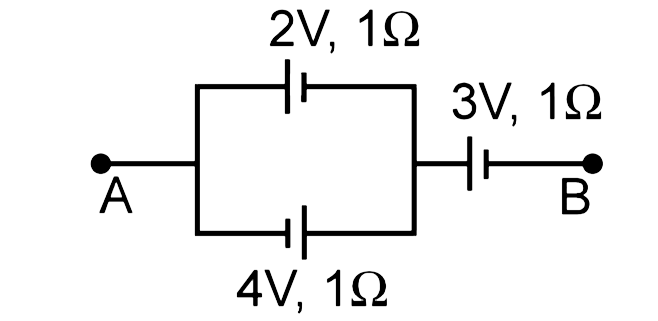Two equal positive charges are kept at points A and B. The electric potential at the points between A and B (exculding these points ) is studid while moving from A to b. The potential
A
continuously increases
B
continuously decreases
C
increases then decreases
D
decreases then increases
Video Solution
Text Solution
The correct Answer is:4

VP=14π∈0[Qx+Qd−x]=Q4π∈0[dx(d−x)]
x(d−x) is maximum when x=d−x⇒x=d/2
At x=d/2,VP is minimum
x→0,VP⇒∞,x→d,VP→∞
A to B ,potential decreases , reaching to minimum at mid-point and then increases.
|
Topper's Solved these Questions
Similar Questions
Knowledge Check
Two equal positive charges are kept at points A and B. The electric potential at the points between A and B (exculding these points ) is studid while moving from A to b. The potential
AContinuously increasesBContinuously decreasesCIncreases and decreasesDDecreases then increasesThe figure shows a arrangement of capacitors and a battery.

The potential of the points B and D are (if VC=0)AVE=8VBVE=12VCVD=8VDVD=12VThe potential difference between point A and B is
 A207VB407VC107VDzero
A207VB407VC107VDzero
The potential difference between points A and B is

View SolutionThe potential difference between points A and B is -

View SolutionThe potential difference between points A and B is:

View SolutionThe potential difference between points A nd B is

View SolutionA,B and C are three points in a unifrom electric field. The electric potential is

View Solution



